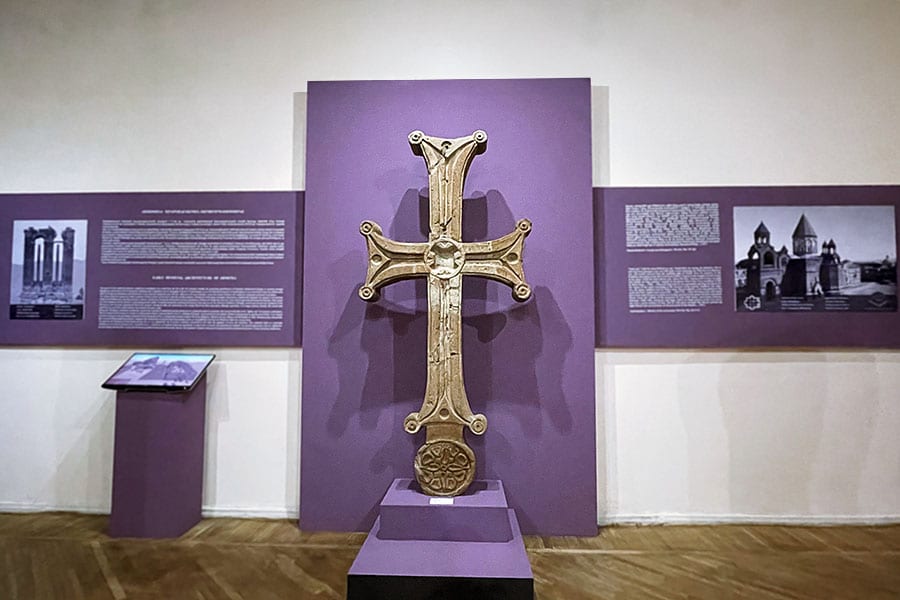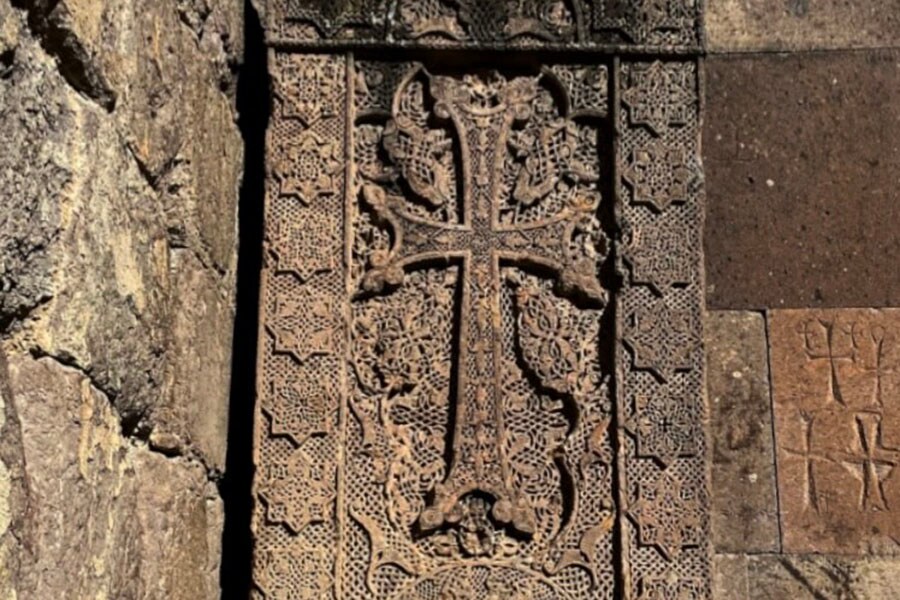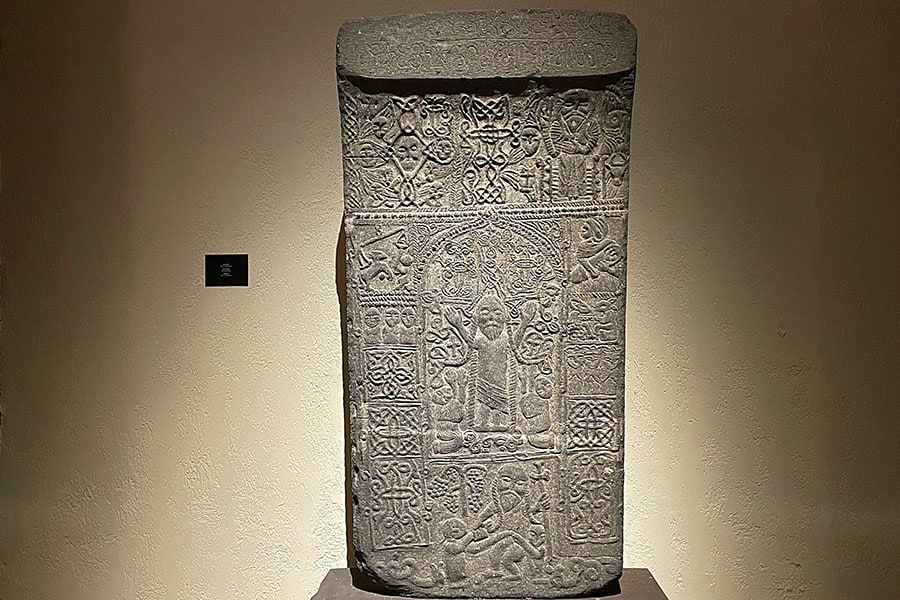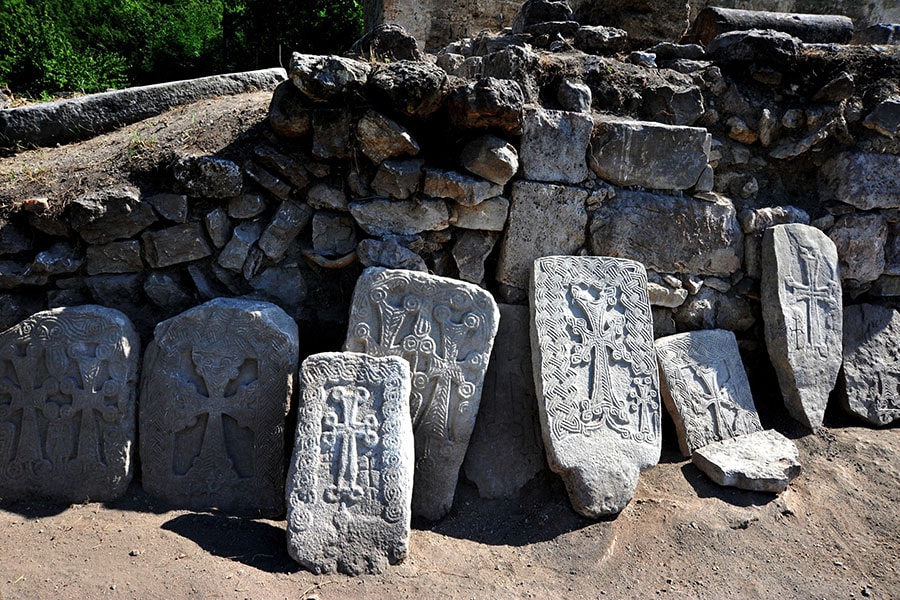
The stone sermons of Armenian Khachkars are a cross-stitch in time
From pagan prayers to Christian crosses, khachkars have witnessed the rise and fall of empires, and the ebb and flow of faith
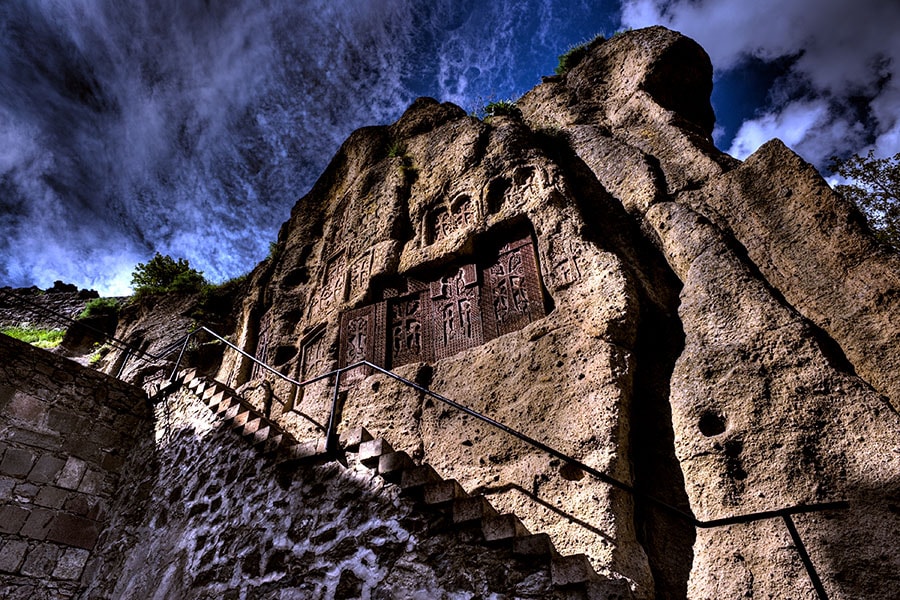 The cave church within the grounds of Geghard Monastery proudly displays four medieval khachkars carved in the 12th century, embedded in its walls amidst the mountainous terrain
Image: Shutterstock
The cave church within the grounds of Geghard Monastery proudly displays four medieval khachkars carved in the 12th century, embedded in its walls amidst the mountainous terrain
Image: Shutterstock
Clad in the volcanic garb of tuff and basalt, Armenia's pastoral architecture eschews the traditional cruciform design, echoing Mount Ararat. Within their walls, a tapestry of artistry unfolds, with painted frescoes and intricate stone carvings narrating Biblical tales. In a world where religion was often a source of conflict, Armenia took a refreshingly progressive approach, becoming the first nation to officially adopt Christianity in 301 AD. To spread the word, they didn't rely on firebrand sermons or imposing cathedrals; instead, they turned to art, creating a unique form of religious expression – the khachkar. In Armenia, where time seems to pause, 50,000 stone tablets with their surfaces chiselled with a Celtic cross, inscriptions, interlocking laces, botanical motifs, and biblical figures whisper primordial tales, beneath celestial skies.
Hamlet Petrosyan, a senior Armenian historian, archaeologist, and anthropologist divulged, "The erection of khachkars began in the middle of the 9th century when the Bagratuni dynasty gained political independence. The cross was an open-air monument, and if the territory did not belong to you, the Arabs strictly forbade their use, and only with the wave of independence did the erection of cross-stones begin. Before the 9th century, there were crucifixes on various churches, on the apses of churches, on their windows, and on their pediments, and as a rule, early Christian monuments ended with winged crosses. But they were not khachkars. A khachkar is a slab that is specially designed only for cross-formation."
Timeless sentinels inspired by the art of obelisk carving, these khachkar cross-stones, hailed as “Intangible Cultural Heritage” by Unesco in 2010, have etched their presence onto the Armenian landscape for centuries. khachkars, are carved on a variety of stones, ranging from the natural black stone to yellow-reddish tuff to the Basalt. Ruben Ghazaryan, a khachkar-maker, who honed his craft at the 13th-century Noravank monastery, works with the soft, felsite stone, a name synonymous with Momik, a famous medieval master architect. Whereas, Bogdan Hovhannisyan, another veteran khachkar-maker maintains the centuries-old tradition of khachkar carving at his workshop in Vanadzor, by carving on gypsum stone.
Babik Vardanyan, 42, a khachkar-maker whose ancestors were Kartash masters, shares, "My father started khachkar making in the 1970s. This was the Soviet period when Christianity was banned and most of the churches were closed. During this period, my father began to make khachkars, which were ordered mainly as tombstones. In the last 20 years, I have made over 200 khachkars, and each one of them is unique and has its distinct history. A khachkar is handmade. I use a cutter and a hammer. In ancient times, when there was no saw, people smoothed and moved the stones by hand, that's why they were also called kartash (kar means stone in Armenian and tash/tashelis to smoothen, hack or prepare) masters. Now, of course, there are also electric tools that facilitate the processing of stone, but at the same time, human hands give soul to stone. On average, I work on each khachkar for 1-1.5 months, and making of more complex khachkars, takes three-six months."
At the heart of every khachkar, a cross asserts its dominance, while beneath it, a rosette or solar disc gleams with celestial fervour. Intricate knots of stone intertwine like Celtic braids. The rest of the stone canvas is a chronicle of nature's bounty, an idyllic tableau unfolding with a grapevine ballet, where slender tendrils pirouette amidst leaves, and pomegranates, with their ruby crowns, glisten with the promise of prosperity. The pièce de résistance, however, is the cornice, a sculpted crown that elevates the khachkar from a mere monument to a masterpiece. Upon this sacred stage, biblical scenes and revered saints come to life in stone, their timeless stories etched into the very fabric of the khachkar.



